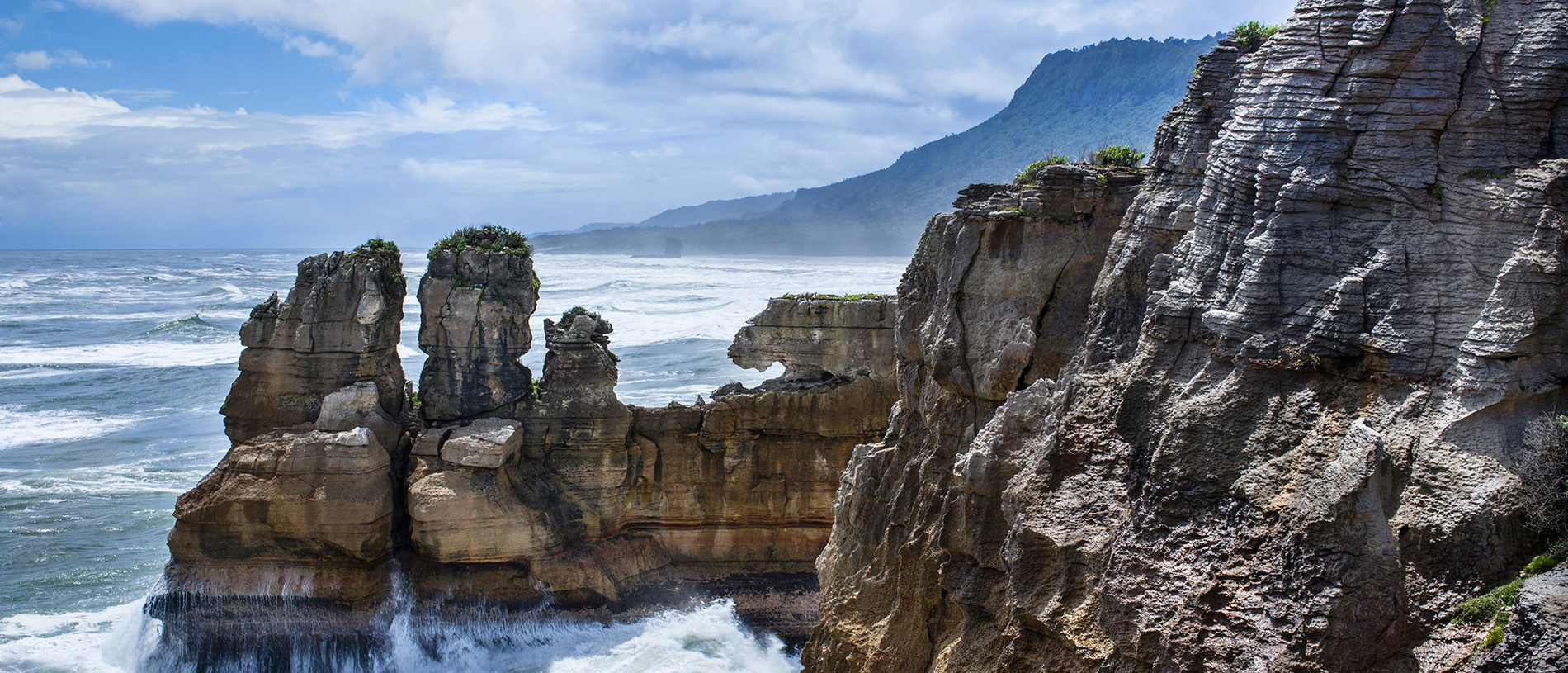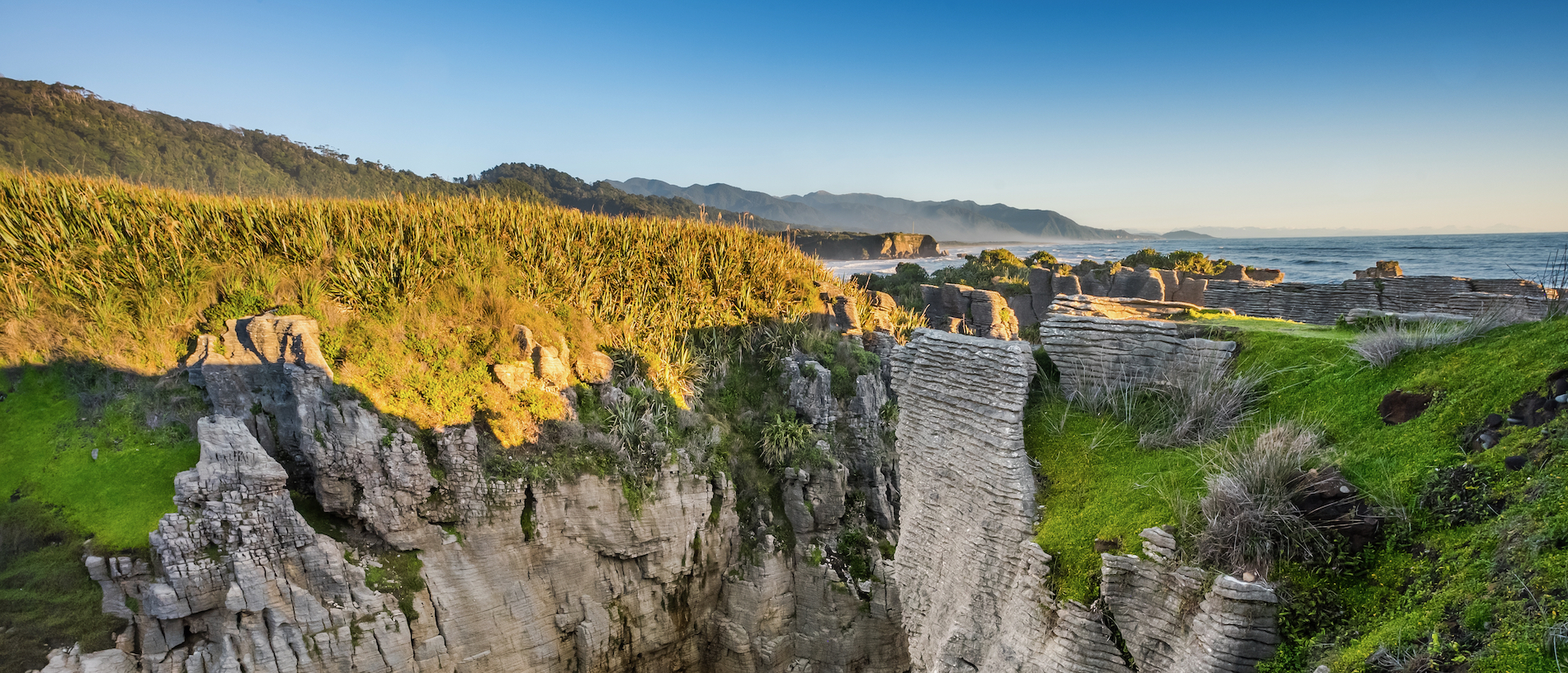
Punakāiki Marine Reserve
Punakāiki Marine Reserve surrounds the pancake rocks and blowholes at Dolomite Point, one of the most distinctive landscapes of the West Coast.

Funny that Māori should have had a word that sounded so much like the English word for ‘pancakes.’ Funnier yet that it should have been applied to a place where the rock formations so closely resembled enormous, petrified stacks of pancakes.
Of course, it’s no coincidence at all. The name Punakāiki is a Māori phonetic representation of the word ‘pancakes’. And there are no prizes for guessing why the Pancake Rocks are so-called.
The business end of Dolomite Point in Westland cops some serious sea and, over the centuries, the 30-million-year-old limestone of which it is composed has eroded.
Limestone is a sedimentary rock – it’s composed of the remains of shellfish that lived and died in the primeval sea, their shells laid down in layer upon layer and gradually compressed and petrified into rock.
Some years were evidently good years for shellfish in the primeval sea. Others were decidedly dodgy, and the layer of rock corresponding to the off years is less dense and therefore softer. When the sea gets its claws into the layered limestone, it quickly strips the softer layers away, leaving the harder layers behind. That’s what gives the Pancake Rocks their distinctive stacked appearance.
You reach this geological marvel with a short walk through a pocket of dense bush. Access out onto the rock formation itself is by a short, gravel track and a series of boardwalks.
The same erosion that has left some layers intact and carried others away has also sculpted Dolomite Point into a series of caves and surge channels.
On a calm day, you can hear and feel the water heaving and breathing under your feet, and you can watch the incoming and outgoing swells gently combing the kelp in the blowholes.
On a rough day, the sea thunders into the sea caves and forces its way up through vertical shafts in great plumes of white foam. It’s an awe-inspiring display of sheer weight and energy.
The same limestone of which the Pancake Rocks are formed persists inland from Punakāiki in the Paparoa National Park, which is endowed with some fascinating landforms – caves, sinkholes, and great white-walled gorges through which pure, limestone-filtered streams and rivers flow. Paparoa, for this reason, is a playground for cavers, rafters, kayakers and trampers alike.
The coastline north from Punakāiki to Karamea, the northernmost extent of the road, is quite beautiful, with white-sand beaches and rugged headlands quarrelling with the Tasman Sea.
Flapjack Rocks just wouldn’t have had the same ring, really. And as for Crêpe Rocks, they’re definitely not that.